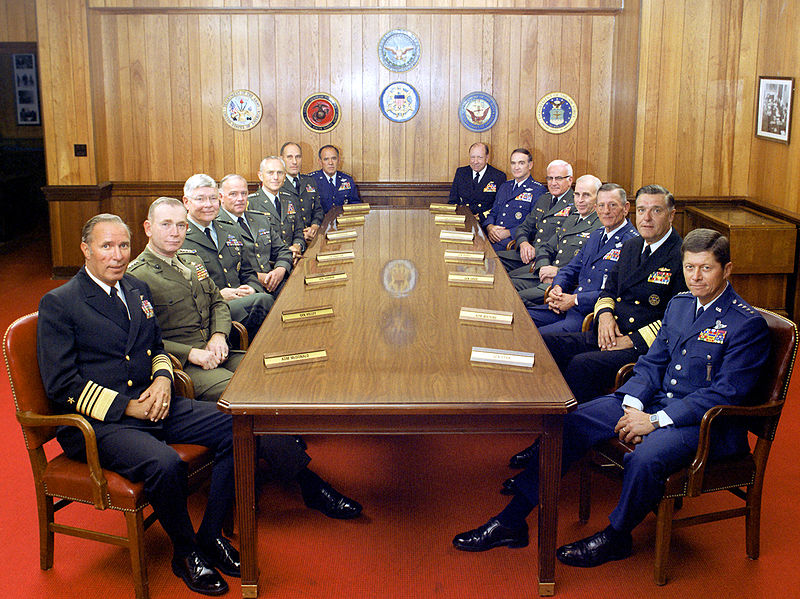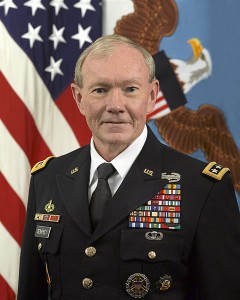
Strategy for Defense Savings: Reduce Number of 4-Star Generals
As the Pentagon looks to conduct more efficient and effective business, without inviting additional national security threats, one key target of cuts could be the plethora of Four-Star command positions in the armed forces.
 Several key actors are already looking for ways to cut these positions. Seth Robson of Stars and Stripes recently published an article, entitled, “Dempsey: Military ready to trim numbers, perks of top brass,” detailing Chairman of the Joint Chiefs of Staff General Martin Dempsey’s plan to eliminate 144 generals and admirals as well as the generous perks that accompany their positions. Similar suggestions in a recent report by Sen. Tom Coburn (R-OK) claim a reduction of 200 high level officer positions across the armed forces could save the Pentagon $800 million over the next decade.
Several key actors are already looking for ways to cut these positions. Seth Robson of Stars and Stripes recently published an article, entitled, “Dempsey: Military ready to trim numbers, perks of top brass,” detailing Chairman of the Joint Chiefs of Staff General Martin Dempsey’s plan to eliminate 144 generals and admirals as well as the generous perks that accompany their positions. Similar suggestions in a recent report by Sen. Tom Coburn (R-OK) claim a reduction of 200 high level officer positions across the armed forces could save the Pentagon $800 million over the next decade.
General Dempsey and Dept. of Defense leaders could focus their cuts on the high command, specifically Four-Star Generals and Admirals. The notion that each new crisis requires the creation of a Four-Star command position must be curbed. Redundancy among high level staff does not provide benefit; rather such an arrangement leads to extremely wasteful inefficiencies such as a “stove-piped” bureaucracies and a host of coordination problems.
An overabundance of high level officers not only hampers operational efficiency, but it is also extremely costly. Four-Star generals command high salaries ranging from $191,000 to $235,000 per year dependent upon experience. Furthermore, these officers receive immense perks including excessive military spending on lavish homes, personal jets, aides and a pension program in which total retirement pay can differ by approximately $1 million between a retired Three-Star and a retired Four-Star. (A full military pay scale matrix can be found here.)
Inefficient costs pile up as more officers join the Four-Star ranks. U.S. Armed Forces are currently commanded by thirty-six active duty Four-Star Generals, approximately ten more than provided for by the standard language of the U.S. Legal Code (Title 10 Sect. 525). These “extra” Four-Star Generals are the result of a culture within the Pentagon that facilitates the usage of legal code exemptions to bolster the high level officer corps.
A reduction in the number of high level command positions will help provide great savings at minimal operational costs. Only senior command positions for which supreme powers are an absolute necessity could receive a Four-star ranking. Other strategic operations can be carried out by lower ranking generals. Reform of the Armed Forces command structure is necessary to achieve such objectives.
In the short-term, legislators and Pentagon officials must amend and/or repeal exemption clauses in the U.S. legal code with regards to the promotion of additional Four-Star officers. The code must become more stringent on the Secretary of Defense’s autonomous power to promote and create new command positions. Moreover, a provision that requires the demotion of any Four-Star General after sixty days of inactivity must be enforced across the board rather than selectively.
Medium-term action could include the offer of early retirement packages to the longest serving Four-Stars provided they are not a member of the Joint Chiefs of Staff or a supreme branch commander. These offers may initially cause appropriation over-runs but will provide for great savings in the long term as the pension program is reformed. Also, the Department of Defense must devise a more flexible command and responsibility structure to strategically deal with crises that arise. The new arrangement could eliminate unneeded Four-Star positions and create a fluid process of command adaptation to a variety of emerging threats.
In the long-term, officials must implement the new command structure and allow unnecessary positions to disappear as the general or admiral in question retires. With budget reductions likely to persist, the Pentagon must continue to keep the number of high level officer positions, staffs and benefits low. A new range of hybrid and asymmetric threats require that valuable resources are heavily dedicated to strategic, operational, and tactical security imperatives rather than defense administration.
Like the large conventional armies that preceded them, overstocked military leadership is a thing of the past and could face the same cuts.






My sentiments exactly. Well Done!!!